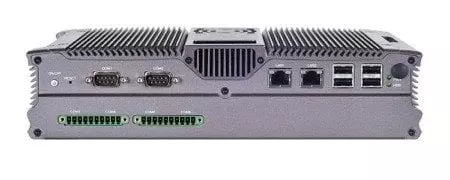The Internet of Things has become an unstoppable wave threatening to transform all devices with Internet-enabling technology. In large deployments (i.e. industrial automation), where thousands of sensors constantly supply information, this has created a need for gateways capable of communicating in various low-power wireless technologies (Zigbee, Bluetooth LE, etc.), as well as collecting and processing this information before it is sent to other systems.
Programmable logic controllers (PLC’s) existed before information technology, and are the heart of operational technology. Over time PLC’s have grown in complexity and have gradually adopted technologies/standards and techniques from Information technology (i.e. Ethernet communications). This began the convergence of IT/OT that is still going on today.
The demarcation between Information technologies and Operational technologies is all but gone now with the advent of the Internet of things. Gone are the days when a seasoned control systems engineer could walk into a factory he’d never laid eyes on, sit at a terminal, locate the faulty PLC and fix halted systems. The intricacy of modern industrial IoT systems demands a deeper understanding of its inner-workings, giving rise to the growing need for trained personnel with skill sets that overlap IT and OT.
Gateways need to be flexible
Programmable Logic Controllers (PLC’s) are the workhorse for most modern automated systems, and they use dozens of different protocols to communicate. This is where intelligent IoT gateway platforms truly shine.
The Industrial IoT Gateways

Industrial IoT gateways can take on several forms, from small embedded boards, to large standalone appliances with powerful Intel processors. Gateways used to be limited in function and scope, but given that Moore’s law has decreased costs and increased general computing power several times over, they have been given more important and demanding tasks.
Modern IoT Gateways may include expansion slots for the myriad of wireless communication technologies, diverse serial Input/output and standard Ethernet communications technologies. These open standards allow Industrial gateways to aggregate sensor data, process and filter the data, send information/receive information and even execute control operations on its I/O interfaces.
Why is a gateway needed?
Even outside of industrial settings, there are many cases where implementing IoT gateways is the better solution. Gateways become necessary when dealing with hundreds, even thousands of devices (often times with varying communication technologies and protocols), and they allow for what is known as “fog computing”.
In a cloud computing model, devices only transmit and receive information from a centralized source (the cloud). In a fog computing model, Intermediary nodes are responsible for processing and filtering the information before sending it out to its destination. Fog computing effectively reduces the workload and time for most processes. It’s especially useful in an industrial setting, where control systems are time critical and can rely on localized controllers for orchestration(i.e. Intelligent IoT gateway’s) and offload more complex or abnormal orchestration to a remote master orchestrator(i.e. the cloud).
It takes many aspects from edge computing, where its goal is to push computing and resources as close to the user/end device as possible. Complex systems even involve collaboration with other near user-edge devices to pool faster local resources instead of constantly relying on the cloud. This brings about reduced latency and backbone infrastructure requirements, improving overall QoS, reliability and redundancy.
Security
Security is an ever-growing concern with technology today, as hackers increase their collaboration and resources. Many businesses and IoT device manufacturers have suffered from security vulnerabilities and there is no end in sight. As many IoT devices offer limiting computing resources, Gateways will have the important task of securing communications.






